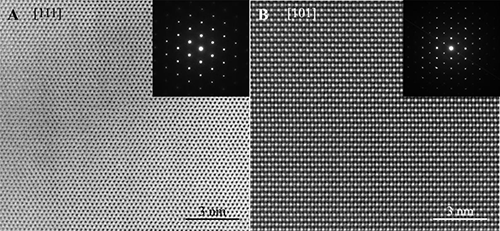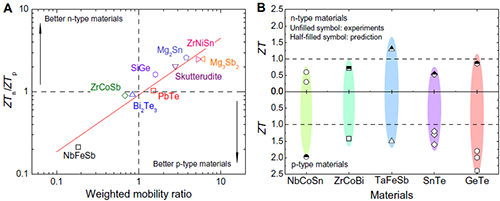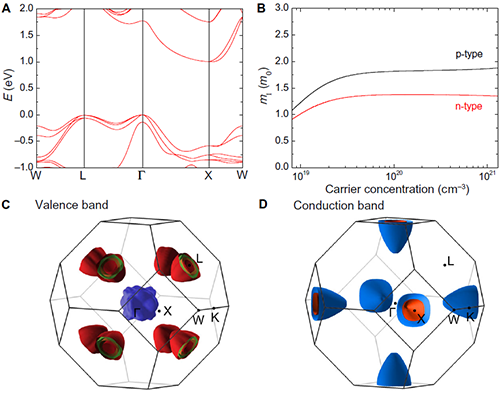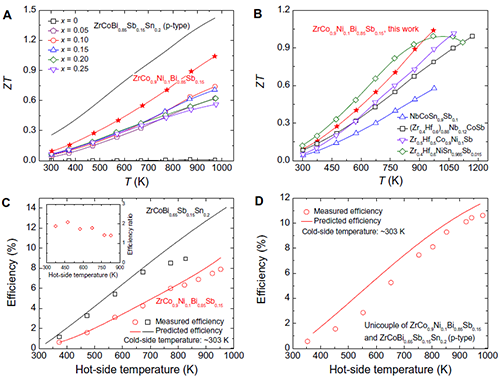Scientists explore new materials for thermoelectric generation by calculating the asymmetry of performance.
Date:20-06-2019 Print
Solid-state energy conversion from heat to electricity and vice versa can be realized by a thermoelectric module employing thermoelectric materials.
Generally, the thermoelectric module consists of multiple pairs of n- and p-type materials that are connected thermally in parallel and electrically in series.
To achieve a high energy conversion efficiency, high thermoelectric performance for both types of materials is highly desired. In addition, to minimize the thermal stress that originates from the mismatch of thermal expansion coefficients between n- and p-type materials, it is ideal to adopt the same base compound for both type of materials.
Practically, however, it is challenging to simultaneously achieve high thermoelectric performance for both types in a given compound. In other words, the thermoelectric performance is often asymmetrical, in that one type outperforms the other. Therefore, understanding this asymmetry is critical for material optimization and for module design.
Recently, researchers led by Dr. WANG Yumei from Institute of Physics, Chinese Academy of Sciences have teamed up with Prof. REN Zhifeng from University of Houston and Prof SINGH J David from University of Missouri, identified the relation between the asymmetry and materials’ parameters, which can be used to predict the performance of unreported type of a given material.
This correlation can be helpful for predicting the thermoelectric performance of the unreported type of a material when that of the other type is known. Our predictions indicate that high ZT can possibly be achieved in n-type SnTe, n-type GeTe, n-type ZrCoBi, n-type TaFeSb, and p-type NbCoSn.
In this work, the efficient dopant for ZrCoBi is identified, and a reasonably high ZT for the n-type ZrCoBi-based half-Heuslers is experimentally verified. A high peak ZT of ~1 at 973 K can be realized by ZrCo0.9Ni0.1Bi0.85Sb0.15, which is comparable with the n-type ZrNiSn-based materials at elevated temperature and is noticeably better than all the other n-type half-Heuslers over the whole temperature range.
Despite the asymmetrical thermoelectric performance (i.e., the p-type outperforming the n-type), ZrCoBi-based compound can achieve ZT above unity at 973 K for both types. More importantly, the measured heat-to-electricity conversion efficiency for the unicouple of ZrCoBi-based materials can be as high as ~10% at the cold-side temperature of ~303 K and the hot-side temperature of ~983 K.
Our work demonstrates that the ZrCoBi-based half-Heuslers are highly promising for the application of mid- and high-temperature thermoelectric power generation.
This study entitled "Understanding the asymmetrical thermoelectric performance for discovering promising thermoelectric materials" was published on Science Advances.
The study was supported by the National Natural Science Foundation of China, and U.S. Department of Energy, Office of Basic Energy Science.
 |
| Figure 1. TEM image of ZrCo0.9Ni0.1Bi0.85Sb0.15. |
 |
| Figure 2. Thermoelectric performance of materials predicted by the relationship between the asymmetry and weighted mobility ratio. |
 |
| Figure 3. Comparison of electronic structure and effective mass for n- and p-type ZrCoBi. |
 |
| Figure 4. Thermoelectric performance and heat-to-electricity conversion efficiency of ZrCoBi-based half-Heuslers. |


